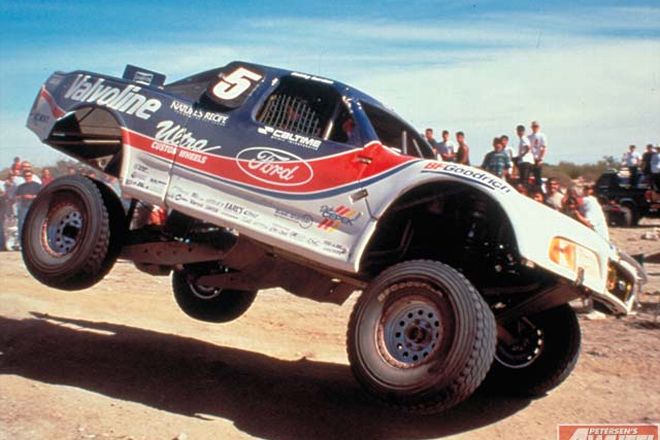
 David Kennedy
Contributor
David Kennedy
Contributor
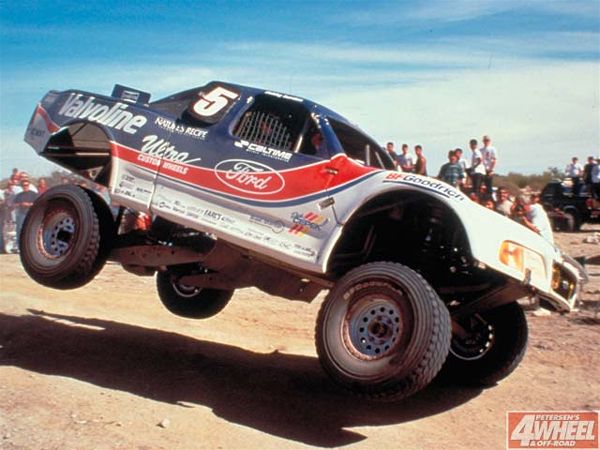
It's been 25 years since Ford put a solid axle under the front of anything but a 1-ton truck--and man, has it come a long way! Traditionally General Motors is credited (blamed) for converting the light-truck market to independent front suspension (IFS), but the truth is that Ford set the ball rolling with its twin traction beam (TTB) suspension in 1980. It lasted 16 years in the 1/2- and 3/4-ton truck (six years in the 1-tons) before being replaced by a new A-arm suspension in the F-150 and a solid axle in the F-250s. But over the years Ford developed a reputation for building a robust IFS that can be modified for insane suspension travel. In terms of simplicity, cost, and raw wheel travel, TTB still has an advantage over the latest stuff coming out of Dearborn. However, when it comes to street driving and ride quality, you can't beat the current production stuff. We dug deep this month into the Ford tech bin to come up with goodies on all of the Ford IFS systems - no matter which one is your favorite.
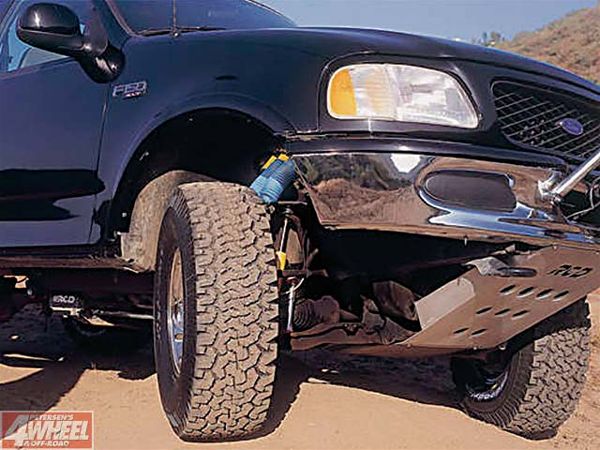
1997-2003 F-150
In 1997 Ford ditched the TTB suspension on the F-150 and went to a short/long A-arm suspension like GM had used since 1988. This change fixed the steering and tire-wear issues the TTB trucks had, but added complexity and made the F-150 more expensive to lift. A 4-inch Rancho kit from 4Wheel Parts Wholesaler for a 1996 F-150 (with TTB) costs $830 compared to $1,600 for the 4-inch kit on the 1997 (A-arm truck). When shopping for a lift we recommend going with a kit that includes replacement knuckles (like the RCD kit shown) to allow the upper A-arm to stay in the stock location. That way the front suspension can be aligned just like a stock truck and there are fewer brackets to come loose.
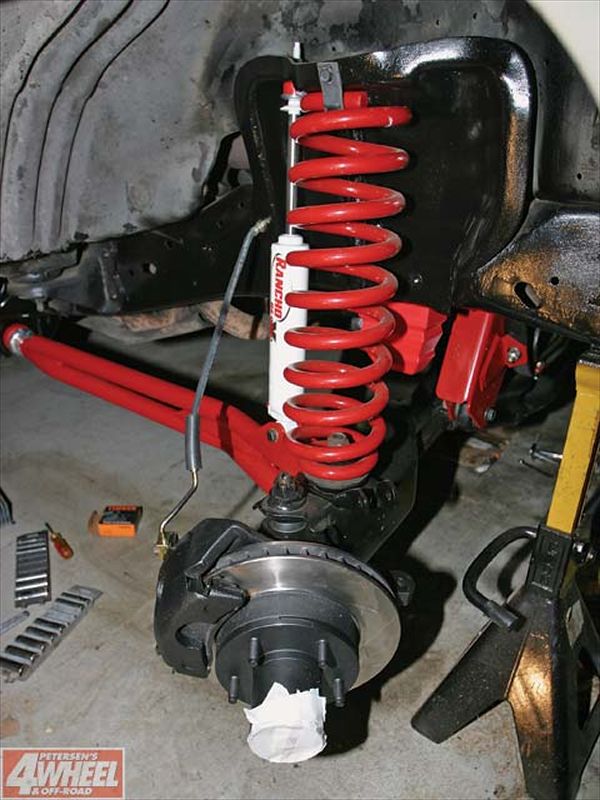
TTB Trucks
From 1980 to 1996 Ford used a swing-arm front suspension that it called twin traction beam (TTB). On 1/2-ton trucks it used coil springs and radius arms, while the F-250s and 1980-1986 F-350s used leaf springs. When modified with an extended radius-arm lift kit (4-inch Rancho kit shown), this simple IFS suspension gives an impressive amount of suspension travel with very few moving parts. If you're looking for the most suspension travel for your dollar, TTB trucks win hands-down. Kits that lengthen the TTB and radius arms to get 16 to 21 inches of front suspension travel with 33x12.50-15 tires are available from Autofab (starting at $2,700) and Camburg Engineering (starting at $3,900).
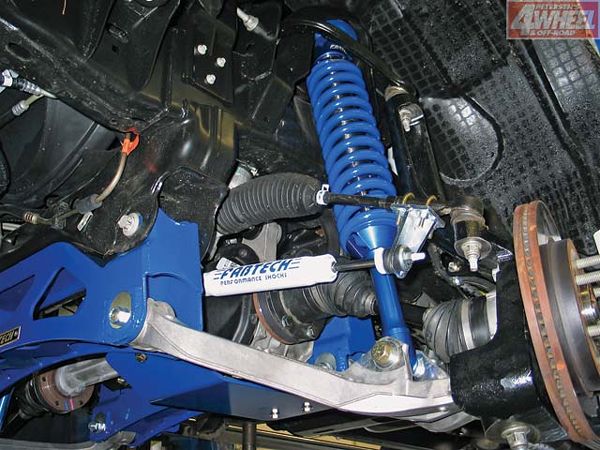
2004-and-Newer F-150
By 2004 Ford was onto its second-generation A-arm suspension that it developed for the Expedition, Navigator, and F-150. The biggest change from the previous suspension is the switch to rack-and-pinion steering and coilover shocks instead of torsion bars. This design gave the new truck much better ground clearance (no torsion bars hanging down) and even better steering feel. To lift these F-150s, most suspension manufacturers lower the differential and lower control-arm mounts and fit the truck with taller spindles. That way the stock steering stays in place, and the truck keeps the factory ride quality and alignment capability. Lift kit prices vary based on the shock option you select, but base price for this Fabtech 6-inch kit (fits 35x12.50-16s) is $1,793 from 4Wheel Parts. The 2 1/2-inch Dirt Logic shocks shown add another $806 when purchased separately.
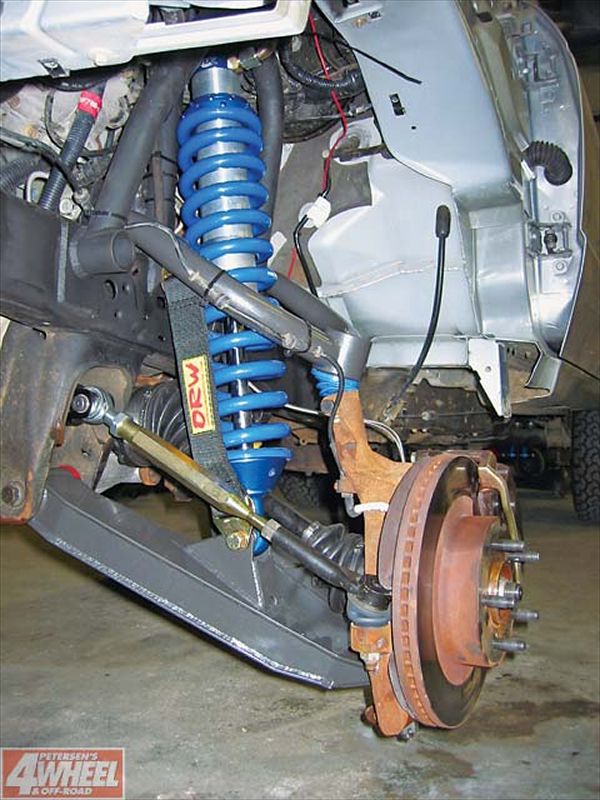
Ranger Coilover Conversion
In 1997 the Ranger was also converted to short/long A-arm front suspension with torsion bars. The problem was that in order to lift these trucks, the torsion-bar mounting points would have to be lowered - killing any ground clearance you gained with bigger tires. To combat this problem, Race Car Dynamics (RCD) offers a 4- to 5-inch lift for 4x4 Rangers that replaces the torsion bars with Bilstein coilover shocks. This kit runs about $2,500 and lets you fit 33x12.50-15 tires. At the high-end, Dixon Bros. Racing offers a kit (shown) that widens your Ranger 4 inches per side with four new A-arms and will give your 1998-2005 4x4 Ranger 14 inches of wheel travel. The kit uses 8-inch-travel 2 1/2-inch-diameter Fox Shocks, requires you to run fiberglass fenders, and costs you about $4,160 for the pieces.
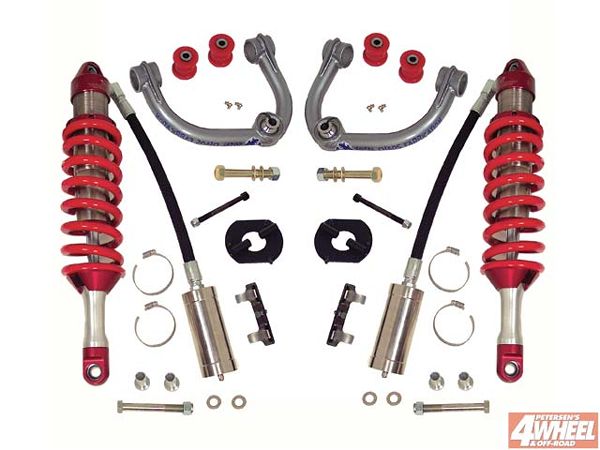
Off-Road-Race Inspired
Ford engineers designed more travel into the steering tie-rod ends, outer constant velocity (CV) joint, and lower ball joints on the 2004 model than on the previous F-150. To take advantage of this, Total Chaos Fabrication has developed a 2-inch lift ($769) that'll fit 33x12.50s (35s with fiberglass fenders), leave the differential in the stock location, and fit 8-inch-travel 2 1/2-inch-diameter Sway-A-Way reservoir shocks ($990). The kit comes with a new chromoly upper control arm with a 1-inch uniball for more angular movement. These arms will also work with any aftermarket lift kit that retains the factory A-arm and spindle mounting location.
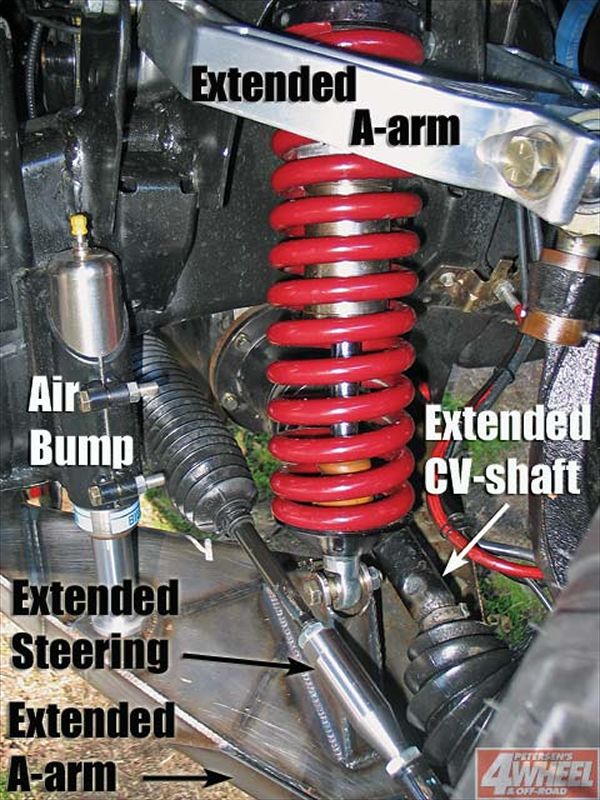
Sky's the Limit
Let's face it, most lift kits on the market are designed for trucks that will be driven on the street 90 percent of the time. A true off-road-use suspension is less about raising the height of the truck and more about wheel travel and durability. For all-out use on the new F-150s, go with JD Fabrication's long-travel suspension kit ($3,595). It uses custom extended-length upper (aluminum) and lower (4130 chromoly) A-arms to widen the track width of the truck 4 inches per side. The differential stays in the stock location for better ground clearance, without having to worry about CV-shaft angles because the halfshafts can now be lengthened. This kit gets 14 inches of wheel travel out of 2 1/2-inch-diameter, 10-inch-travel coilover shocks and can be fitted with optional air bumps for even more control.
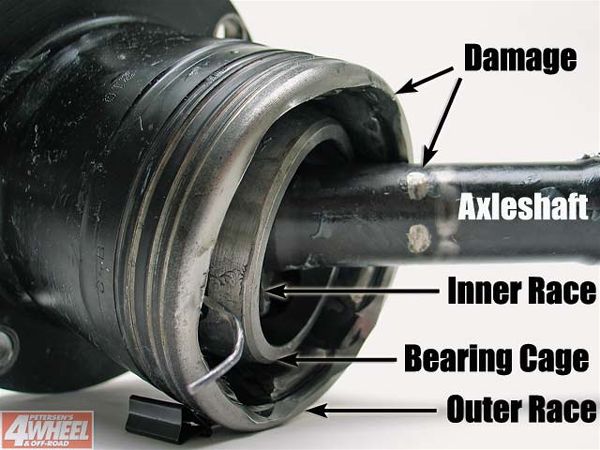
Over-Extended CV Joints
Ford uses CV-joint - equipped axleshafts to connect the differential to the wheel hub on all of its A-arm IFS suspensions. Here you're looking at an inner CV joint with the protective rubber boot removed and all of the grease cleaned out. A CV joint like this transmits torque from the outer race through six steel ball bearings to the inner race that's splined to the axleshaft. A bearing cage keeps the balls in place while everything is spinning. On the 2004 and 2005 F-150s, the outer joint (near the tire) can handle much more angle than the inner joint. But if the suspension has too much droop or compression travel, the axleshafts can contact the outer race and cause terminal damage to the inner joint as shown. To solve this problem, JD Fabrication has developed a conversion kit that replaces the stock inner Ford joints with 930-series CVs that can handle more angle. It offers extended-length CV shafts equipped with the new high-angle joints for use with its extreme-travel suspension for $595.
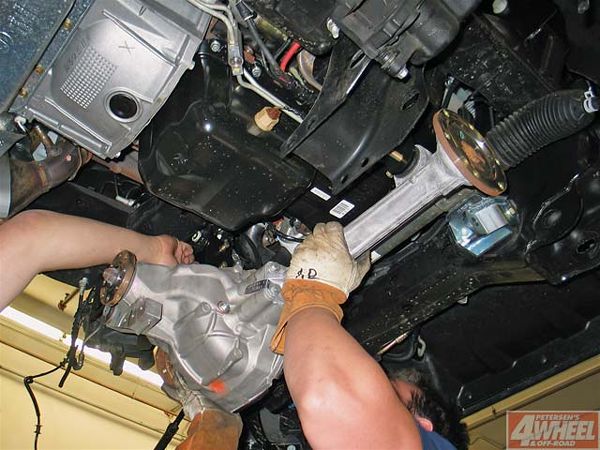
Identifying Your Front Axle
When you lift an IFS Ford truck, you're almost always going to remove the front differential. While it's out, you should take the opportunity to have it regeared and/or install a limited-slip differential. If you don't know what axle you have, this should help.
Rear Spring Source
Ford trucks still rely primarily on a leaf-sprung solid-axle rear suspension. Unfortunately, most Fords come from the factory with 2- or 4-inch blocks already, which means to lift these trucks properly you need new leaf springs - and not stack blocks. Most lift-kit manufacturers offer optional rear leaf-spring kits in addition to blocks or add-a-leaves, but the most complete line of rear springs comes from Deaver Spring. Deaver specializes in multileaf spring packs that are tuned for off-road use. It has applications for all fullsize Ford pickups and Rangers and is well equipped to build custom spring packs for your unique needs.
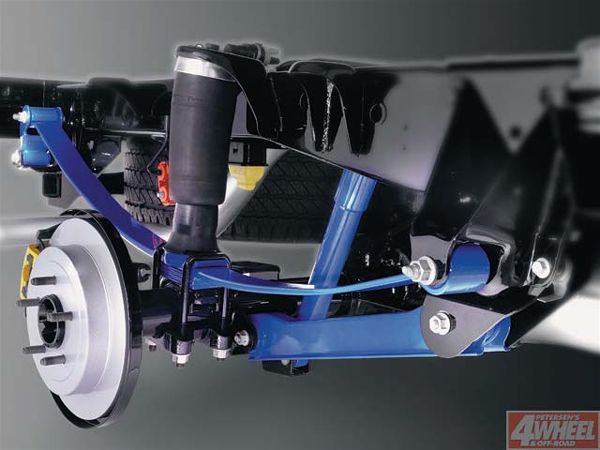
Air-Ride Suspension Conversion
We've never seen anyone do it, but you could probably convert your 2004 or 2005 F-150's rear suspension to use airbags like the 2005 Lincoln Blackwood does. The design seems simple enough; a monoleaf spring pack provides axle location in conjunction with the add-on lower control link. Load capacity comes from an airbag placed on top of the spring plate and harnessed by a spring bucket welded onto the framerail. If you like the idea of an air-ride rear suspension but aren't ready to engineer your own design, Air Lift offers its Road Tamer rear suspension conversion for most 3/4-ton trucks, with 1/2-ton version hopefully to follow.